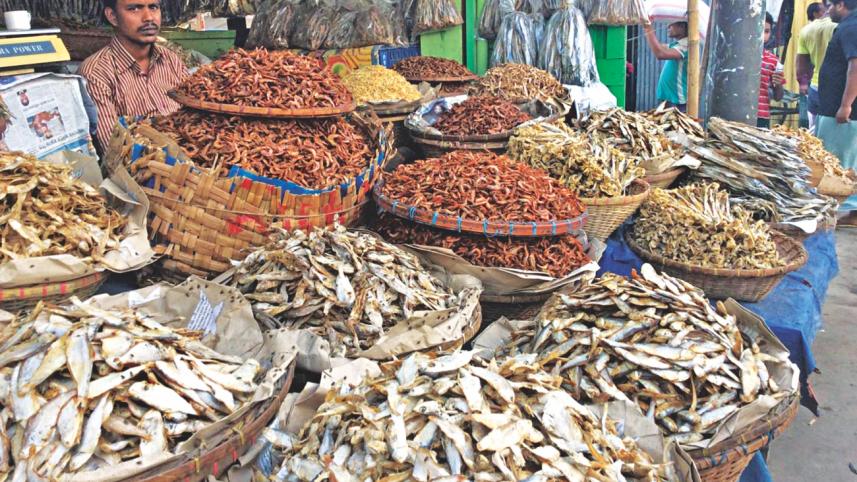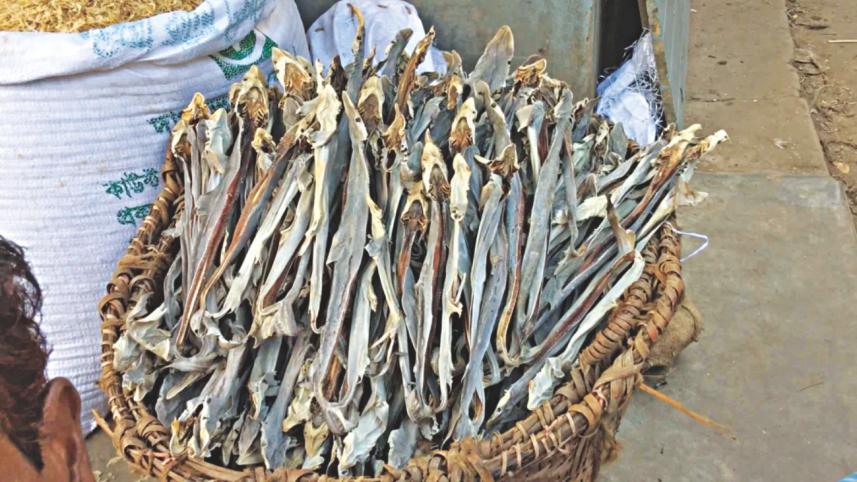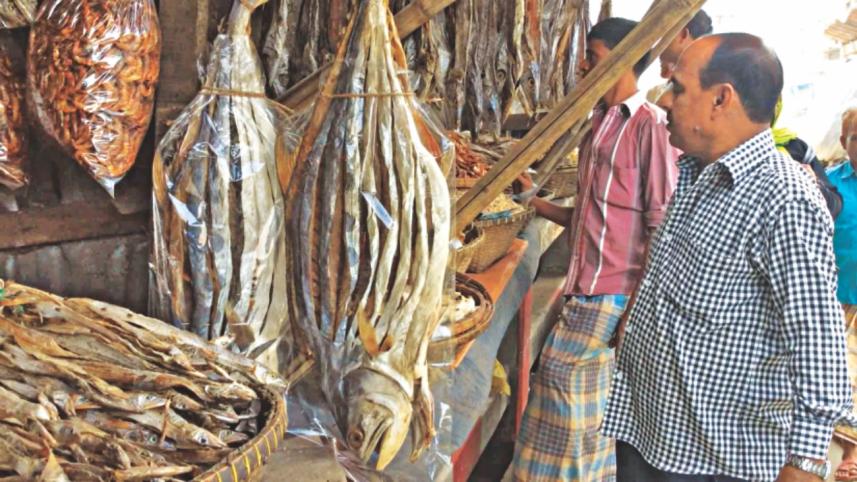Shutki safe

Your nose will tell you where you are. Your eyes will have a hard time to take in all the different varieties. And the names will leave you wondering why you have not heard of them before. But if you are a shutki lover, then Chittagong's Asadganj dry fish market is the place for you.
Sellers display almost all kinds of dry fish. The most popular ones are the Chhuri, Loitta, Icha (shrimp), Lakka, Rupchanda, Poa, Painshha, Rita/Kata, Ulua, Hilsa, Shurma, Moilla etc. You can find “Balachao”, the ever popular dry fish savoury, here too.
The centuries-old famous Asadganj Shutki Mokam has returned to its previous glory of quality dry fish because there are a few cold storages here now that help traders preserve the fish without pesticide or dyes.
“The use of harmful chemicals has come down to around 10 percent due to the cold storage facilities, says Jamal Hossain, a leader of the Asadganj Dry Fish Merchants Association.
Around 200 to 250 traders and 50 wholesalers sell their dry fish in this market at a price way cheaper than any other markets of the country.
As winter approaches, freshly dried fish from different coastal areas pour in at the Asadganj dry fish market, the largest dry fish trading hub of the country in Chittagong's Chaktai-Khatunganj area. So do the shutki lovers, wholesalers and retailers from across the country to get their choice of dry fish.

Traders say production of dry fishes have gone down due to overfishing, pollution of rivers and the sea, and pirate attacks on the fishermen.

“Today our country imports dry fish from India, Myanmar and Pakistan and some other countries to meet 60 percent of the local demand,” Jamal Hossain notes. The country annually consumes around 54,000 tonnes of dry fish, he adds.
Winter is the peak season of dry fish and sacks of fish come in from the Sundarban's Dublarchar and Rangabali, and Cox's Bazar's Kutubdia, Sonadia, Saint Martin's Island, Moheshkhali, Teknaf and other coastal areas of Chittagong. The best fish comes from Rangabali and Sonadia. You have to pay a premium price for it too.
Traders say the flavour of dry fish depends on its freshness, origin and size. To get the best dry fish at a good price here you must know how to drive a hard bargain.



 For all latest news, follow The Daily Star's Google News channel.
For all latest news, follow The Daily Star's Google News channel.
Comments